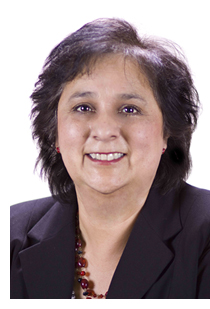
Mary Harker acknowledged as a 'Woman Making History'
ITD’s Chief Human Resource Officer Mary Harker was one of 15 women honored this week by Boise State University as 2011 Women Making History. The Women’s Center at BSU began the program to identify and celebrate the contributions of influential Idaho women in 2001.
“As part of our Women’s History Month celebration, the Boise State Women’s Center has honored more than 250 women making history: ordinary women leading extraordinary lives.
“This year, we honor 15 more women – positive role models nominated for changing the course of history in the state of Idaho,” according to a special publication in Thursday’s Idaho Statesman.
“Often the word ‘history’ summons thoughts of the past, but history is what we make every day. We recognize women for their accomplishments in hopes of educating you about the importance of their work and their contributions. We also hope these stories will inspire you to make your own history by giving something back to your community.”
Retired ITD public involvement coordinator and adjunct BSU professor Gwen Smith was among 18 women honored in 2010.
Michelle George, a long-time friend and colleague in Human Resource Services nominated Harker for the honor last fall.
By Danielle Kuhurt
For the BSU Women's Center
When asked what she does as the Chief Human Resource Officer at the Idaho Transportation Department (ITD), Mary Harker laughs, “I think there’s people inside the organization that would have the same question.”
 Mary is responsible for 1,826 full-time employees through the human resource programs she administers, including her 21-member staff that specializes in compensation, classification, recruitment, benefits and training.
Mary is responsible for 1,826 full-time employees through the human resource programs she administers, including her 21-member staff that specializes in compensation, classification, recruitment, benefits and training.
Mary has served 28 years with ITD, 17 of those as HR manager. During those years, she has seen a significant shift in how the department operates. “HR used to be very administrative,” she says. Since taking on a managerial position, she has seen a transition from “pushing papers” to viewing and managing employees as assets. Her job is to coordinate programs and provide managers with the tools they need to solve employee-related problems.
Getting involved in the male-dominated transportation industry wasn’t planned. After Mary graduated from high school, she pursued a dream to become a singer, but marriage and children took her in a different direction. Then, a divorce forced her to take on two jobs so she could support herself and her children. She started working an entry-level position at the Idaho Personnel Commission (now known as the Division of Human Resources) and eventually transferred to ITD about a year later. As she progressed into higher-level positions, such as personnel analyst and training specialist, she met several outstanding mentors who encouraged her to back to school to strengthen her skills and gain more knowledge.
“Women aren’t wimps,” says Mary. “If they have to solve problems they will; it’s about survival and not giving up … and makes (other women) think, ‘I can do that too.’”
Mary has led several projects, one of which was created to proactively address an approaching shortage in the workforce as baby boomers retire. ITD has created a partnership with the Nampa School District to encourage students to pursue transportation-related careers such as engineering.
This partnership gets teachers and students involved in learning real-life engineering concepts. In the classroom, teachers and volunteers work together to show how engineering relates to all subject areas, including English, math, science and government. They engage students in activities ranging from building race car models and simulated cities to field trips and presentations. An internship program at ITD for high school students is currently under development as well. “It’s blossomed,” Mary says about the collaboration.
Mary also sparked the idea and led the task force to develop a tool kit to help transportation managers across the country deal with HR issues. The tool kit consists of an 84-page book and an interactive database that Department of Transportation personnel are now being trained to use.
“I think the way we approach (HR) is more creative and more proactive than most,” Mary says. Although eligible to retire in two years, she may go on – continuing to make history by showing Idaho and other states across the country new ways to think about human resources.
Published 3-4-2011